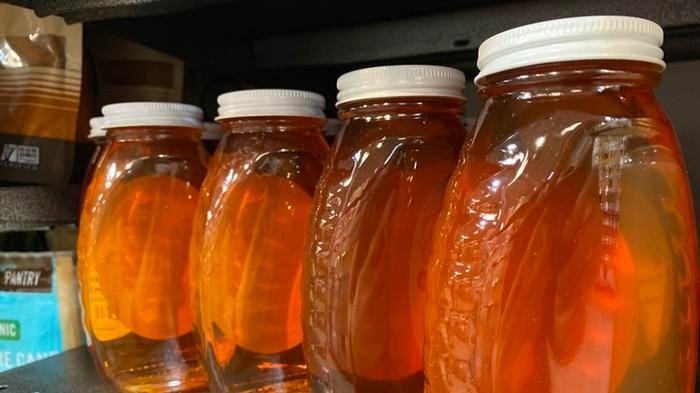
Jars of honey line the shelves at a grocery store. Image Credit: American Institute of Physics
Standard honey adulteration detection technologies are costly, have sophisticated operating procedures, or have low detection accuracy.
A team of scientists from the Nanjing University of Aeronautics and Astronautics and the Hebei University of Technology created a microwave microstrip line planar resonator sensor instrument to detect water adulteration in honey, which was published in Review of Scientific Instruments by AIP Publishing. The tool is small, inexpensive, and simple to make.
The microstrip line resonator sensor is built on a dielectric substrate, which is an insulator that can sustain electrostatic fields efficiently, such as ceramic or glass. Three thin copper strips are separated by two gaps on top. The device’s resonance frequency is determined by the length of the center strip and the intensity of the electric field at the gaps.
When we add water to honey, it changes how the electromagnetic field behaves around it. When placed in the sensor, adulterated honey shifts the sensor’s resonance frequency. By measuring this shift, we can detect water adulteration in honey.
Zhen Li, Study Author and Associate Professor, Nanjing University of Aeronautics and Astronautics
The researchers examined honey samples with variable water content. They discovered that the sensor’s resonant frequency decreased with increasing water content.
Li added, “When choosing a honey product, my family members always have the concerns of whether it is authentic or not. This sensor provides a cost-effective and efficient method for the food industry to ensure honey authenticity.”
The device inspires new applications in liquid analysis, such as food quality control, pharmaceuticals, and petrochemicals, for detecting contaminants or changes in composition, possibly boosting sensing technologies.
Li concluded, “We aim to extend our research to detect adulteration in other liquid products and develop more sensitive sensors for broader applications in quality control and food safety starting with the impact of temperature on our sensor’s performance.”
It is feasible to envision a time when the honey in the jars is unadulterated and as pure as the bees intended, thanks to the efforts of scientists like those who developed this effective sensor.
Journal Reference
Jin, Q., et al. (2023) Review of scientific instruments: Evaluation of adulteration in honey using a microwave planar resonator sensor. Review of Scientific Instruments. doi:10.1063/5.0166005